 |
King of Chemicals Manufacturers |
Specifications, Properties, Uses, SDS of Phenolphthalein BP Ph Eur EP JP IP Analytical Reagent Grade Manufacturer Supplier Exporter Wholesale & Small Packs, CAS Number 77-09-8. |
|
| King of Chemicals has several associated companies having accreditations like cGMP, GLP - FDA Approved Good Manufacturing Practice and Good Laboratory Practice of WHO standard, ISO-9001, ISO-14001, ISO/IEC 17025, ISO ISO-45000, HACCP, FSSC 220000, FSSAI, "REACH" Registered, Kosher & Halal Certified. e-CTD and DMF support can be made available if needed. We offer USP NF BP Ph Eur EP IP JP Analytical Reagent FCC Food Grade Chemicals & Nutraceuticals. | |
        |
|
Muby Chem Pvt. Ltd. is a several decades old group of companies, engaged in manufacturing, supplying, distributing, wholesale supplies of Phenolphthalein BP Ph Eur EP JP IP Analytical Reagent Grade for actual users, including retail or small pack supplies for research and development work.
We supply fine and speciality chemicals, pharmaceutical excipients, mineral fortifiers in chemically pure, analytical reagent grade, IP BP USP Ph Eur EP JP and other pharmaceutical grade monograph including FCC Food grade chemicals and Nutraceuticals at best prices. We and/or our associated units have all the facilities to supply as per cGMP standard observing good manufacturing practice and good laboratory practice. We can assure low microbial count and also offer a test certificate for the same. We maintain warehouses across USA, India, and UAE. Our group exports to USA, Canada, Mexico, Argentina, Brazil, Chile, Korea, Malaysia, Thailand, Indonesia, Europe, and several other parts of the world. We supply in wholesale container loads to small pack of few grams. Solid products may be specified for it size and shape as desired by the buyer.


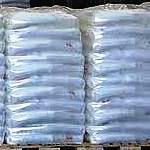

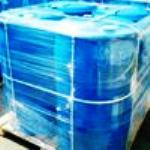
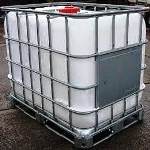
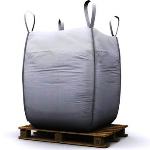
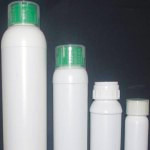

Phenolphthalein CAS Number 77-09-8
For Properties Specifications Uses of Phenolphthalein Click Properties, Specifications, Uses, Price, Process of Phenolphthalein Manufacturer.
For For SDS MSDS Sheet of Phenolphthalein Click SDS Safety Data Sheet MSDS Sheet of Phenolphthalein Manufacturer.
The Properties, Specifications, Monograph and Uses of Phenolphthalein:
Phenolphthalein BP Ph Eur Grade Specifications
Ph Eur --- C20H14O4 --- 318.3 --- CAS 77-09-8
DEFINITION
Phenolphthalein contains not less than 98.0 per cent and not more than the equivalent of 101.0 per cent of 3,3-bis(4-hydroxyphenyl)isobenzofuran-1(3H)-one, calculated with reference to the dried substance.
CHARACTERS
A white or almost white powder, practically insoluble in water, soluble in alcohol. It melts at about 260C.
IDENTIFICATION
A. Dissolve 25.0 mg in alcohol and dilute to 100.0 ml with the same solvent (solution A). To 2.0 ml of solution A add 5.0 ml of 1 M hydrochloric acid and dilute to 50.0 ml with alcohol (solution A1). To 10.0 ml of solution A add 5.0 ml of 1 M hydrochloric acid and dilute to 50.0 ml with alcohol (solution A2). To 2.0 ml of solution A add 5.0 ml of 1 M sodium hydroxide and dilute to 50.0 ml with alcohol (solution B). Examined between 220 nm and 250 nm, solution A1 shows an absorption maximum at 229 nm. The specific absorbance at the maximum at 229 nm is 922 to 1018. Examined between 250 nm and 300 nm, solution A2 shows an absorption maximum at 276 nm. The specific absorbance at the maximum at 276 nm is 142 to 158. Examined between 230 nm and 270 nm, solution B shows an absorption maximum at 249 nm. The specific absorbance at the maximum at 249 nm is 744 to 822.
B. Dissolve about 10 mg in alcohol. Add 1 ml of dilute sodium hydroxide solution. The solution is red. Add 5 ml of dilute sulphuric acid. The colour disappears.
TESTS
Solution S: To 2.0 g add 40 ml of distilled water R and heat to boiling. Cool and filter.
Appearance of solution: Dissolve 0.20 g in 5 ml of alcohol. The solution is clear and not more intensely coloured than reference solution.
Acidity or alkalinity: To 10 ml of solution S add 0.15 ml of bromothymol blue solution. Add 0.05 ml of 0.01 M hydrochloric acid , the solution is yellow. Add 0.10 ml of 0.01 M sodium hydroxide, the solution is blue.
Related substances: Examine by thin-layer chromatography. To pass the test.
Chlorides: Dilute 10 ml of solution S to 15 ml with water. The solution complies with the limit test for chlorides (100 ppm).
Sulphates: 15 ml of solution S complies with the limit test for sulphates (200 ppm).
Heavy metals: Heat 3 g with 50 ml of dilute hydrochloric acid R on a water-bath for 5 min and filter. Evaporate the filtrate almost to dryness and dissolve the residue in 30 ml of water. 12 ml of this solution complies with limit test A for heavy metals (10 ppm). Prepare the standard using 10 ml of lead standard solution (1 ppm Pb).
Loss on drying: Not more than 0.5 per cent, determined on 1.000 g by drying in an oven at 105C.
Sulphated ash: Not more than 0.1 per cent, determined on 1.0 g.
Phenoxyethanol is also available as per USP grade monograph.
Phenolphthalein Analytical Reagent Grade Specifications
3,3-Bis(4-hydroxyphenyl)-1(3H)-isobenzofuranone
3,3-Bis(p-hydroxyphenyl)phthalide
C20H1404:Formula Weight 318.33
CAS Number 77-09-8
REQUIREMENTS
Clarity of alcohol solution: Passes test
Visual transition interval: From pH 8.0 (colorless) to pH 10 (red)
TESTS
Clarity of Alcohol Solution. Dissolve 1.0 g in 100 mL of ethyl alcohol. Not more than a faint trace of turbidity or insoluble matter should remain. Reserve the solution for the test for visual transition interval.
Visual Transition Interval. Dissolve 1.0 g of potassium chloride in 100 mL of water. Adjust the pH of the solution to 8.0 with 0.01 N acid or base. Add 0.15 mL of the 1% solution reserved from the test for clarity of alcohol solution. The solution should be colorless. Titrate the solution with 0.01 N sodium hydroxide until the pH is 8.2 (using the pH meter). The solution should have a pale pink color. Continue the titration until the pH is 8.6 (using the pH meter). The solution should have a definite pink color. Not more than 0.20 mL of 0.01 N sodium hydroxide should be consumed. Each additional 0.20 mL of 0.01 N sodium hydroxide should increase the amount of red color, until at pH 10 the solution should be very red.
Phenolphthalein is also available as per JP EP IP grade monograph.
The MSDS-SDS Hazard Statement of Phenolphthalein:
Phenolphthalein SDS, Safety Data Sheet
MSDS Sheet, Material Safety Data Sheet 04-April-25
Section 1. Product Information
Product Name & Other Names: Phenolphthalein.
CAS No.: 77-09-8
EINECS EC Number: 201-004-7
Relevant uses and uses advised against (if any): Industrial Manufacturing.
Section 2: Hazards Identification
GHS, Globally Harmonized System Classification in accordance with 29 CFR 1910
Classification according to Regulation (EC) No 1272/2008
Germ cell mutagenicity Category 2, H341
Carcinogenicity Category 1A, 1B, H350
Reproductive toxicity Category 2, H361
Labeling according to GHS & Regulation (EC) No 1272/2008
GHS Label Elements  Health Hazard |
Signal Words: Danger
Hazard statements:
H341 Suspected of causing genetic defects.
H350 May cause cancer.
H361 Suspected of damaging fertility or the unborn child.
Precautionary statements:
P201: Obtain special instructions before use.
P202: Do not handle until all safety precautions have been read and understood.
P281: Use personal protective equipment as required.
P304+340: IF INHALED: Remove victim to fresh air and keep at rest in a position comfortable for breathing.
P308+313: IF exposed or concerned: Get medical advice/attention.
Section 3: Composition and Information on Ingredients
Product Name & Other Names: Phenolphthalein.
CAS No.: 77-09-8
EINECS EC Number: 201-004-7
Section 4. First Aid & Procedure
Always get medical attention after the first aid is over.
Ingestion: Never give anything by mouth to an unconscious person. Get medical attention.
Skin: Immediately flush skin with plenty of water for at least 15 minutes. Remove and wash contaminated clothing and shoes before reuse. Get medical attention if irritation develops.
Eyes: Immediately flush eyes with plenty of water for 15 minutes, occasionally lifting upper and lower eyelids. Hold eyelids apart during irrigation. Get medical attention.
Inhalation: Remove person to fresh air. If breathing is difficult, give oxygen. If not breathing administer artificial respiration. Get medical attention.
Section 5. Fire Fighting Measures
Fire/Explosion: Not considered to be a fire and explosion hazard.
Extinguishing Medium: Water spray, alcohol-resistant foam, dry chemical or carbon dioxide.
Special hazards arising from the substance or mixture: Carbon oxides may evolve.
Fire Fighting Instructions: Use suitable protective equipment for surrounding fire.
Special Information: In the event of a fire, wear full protective clothing and NIOSH-approved self-contained breathing apparatus with full face piece operated in the pressure demand or other positive pressure mode.
Section 6. Spills and Disposals
Personal precautions, protective equipment, and emergency procedures: Avoid breathing dust/fumes/gas/mist/vapors/spray. Use individual protective equipment (waterproof boots, suitable protective clothing, safety glasses, etc).
Environmental precautions: Do not let the product enter drains, soil, or water sources.
Methods and materials used for containment Cleanup procedures and Storage: Contain spilled material. Pick up and arrange disposal without creating dust. Sweep up and shovel. Keep in suitable, closed containers for disposal. Avoid dust formation. Avoid breathing vapors, dust/mist, or gas. Ensure adequate ventilation. Stop leak if safe to do so.
Section 7. Handling and Storage
Precautions for safe handling: Use with adequate ventilation. Apply according to good manufacturing and industrial hygiene practices. Ensure proper ventilation. Wash thoroughly after handling. Do not drink, eat, or smoke while handling. Avoid contact with skin, eyes, and clothing. Minimize dust generation. Avoid breathing dust/fumes/gas/mist/vapors/spray. Keep container tightly closed. Avoid ingestion and inhalation. Use individual protective equipment (waterproof boots, suitable protective clothing, safety glasses, etc). Avoid prolonged or repeated exposure.
Conditions for safe storage, including any incompatibilities: Store in cool, dry, and ventilated area away from heat sources and protected from sunlight in tightly closed original container. Keep air contact to a minimum. Do not leave the material container open. Store protected from heat, sparks and ignition sources and incompatible materials. Avoid inhalation of dust/mist/vapor. Do not store with incompatible materials like strong acids, bases, oxidizing agents (e.g. perchlorates, peroxides, permanganates) and strong reducing agents (e.g. phosphorus, tin (II) chloride, metal hydrides).
Section 8. Exposure Controls & Personal Protection
Exposure Limits: Contains no substances with occupational exposure limit values.
Engineering Controls: Use adequate exhaust ventilation to keep airborne concentrations low.
Ventilation System: A system of local and/or general exhaust is recommended to keep employee exposures as low as possible.
Personal Respirators (NIOSH Approved): For conditions of use where exposure to dust or mist is apparent and engineering controls are not feasible, a particulate respirator may be worn.
Skin Protection: Wear protective gloves and clean body-covering clothing.
Eye Protection: Use chemical safety goggles and/or full face shield where dusting or splashing of solutions is possible. Maintain eye wash fountain and quick-drench facilities in work area.
Other Control Measures: Maintain good housekeeping in work area. Handle in accordance with good industrial hygiene and safety practice.
Section 9. Physical & Chemical Data
Physical State: White Solid Powder or Crystals.
Odor: None
Odor threshold: Not applicable.
pH: No data found.
Relative density: 1.296
Melting Point: 261C - 263C
Initial boiling point and boiling range: > 450C
Auto-ignition temperature: 397 °C
Flash point: No data found.
Decomposition temperature: No data found.
Upper/lower flammability or explosive limits: No data found.
Vapor pressure: No data found.
Vapor density: No data found.
Evaporation rate: No data found.
Flammability (solid, gas): No data found.
Partition coefficient: n-octanol/water: No data found.
Solubility in water: Soluble
Viscosity: No data found.
Section 10. Stability and Reactivity
Chemical Stability: Stable under recommended temperatures and pressures.
Incompatibility (Materials to Avoid): Strong acids, bases, oxidizing agents (e.g. perchlorates, peroxides, permanganates) and strong reducing agents (e.g. phosphorus, tin, chloride, hydrides).
Conditions to Avoid: Incompatible materials, excessive heat.
Hazardous Decomposition Products: Carbon oxides.
Hazardous Polymerization: Will not occur.
Section 11. Toxicological Information
Toxicity to Animals: LD50 Oral - Rat - Not available.
Carcinogenicity: IARC: 2B - Group 2B: Possibly carcinogenic to humans.
Specific target organ toxicity: May cause damage to organs through prolonged or repeated exposure. Overexposure may cause reproductive disorder(s). May cause congenital malformation in the fetus. Suspected human reproductive toxicant.
Teratogenicity: No data found.
Section 12. Ecological Information
Results of PBT and vPvB assessment: This substance/mixture contains no components considered to be either persistent, bioaccumulative and toxic (PBT), or very persistent and very bioaccumulative (vPvB) at levels of 0.1% or higher.
Mobility in Soil: No data found.
Environmental Precautions: DO NOT DISCHARGE into drains and rivers.
Acute Toxicity Daphnia: EC50 (Daphnia magna): > 4.34 mg/l/48h
Section 13. Disposal Suggestions
Dispose of in accordance with all applicable local, state, and federal regulations at an approved waste disposal facility.
Section 14. Transport and Label Information
DOT USA, TDG Canada & ADR/RID Europe: Not controlled.
IMDG/IMO: Not controlled.
IATA: Not controlled.
Section 15. Regulatory Information
USA:
SARA 311/312: Chronic hazard. Health hazard.
California Prop.65: Listed by the State of California to cause cancer. Suspected human reproductive toxicant.
Section 16. Other Information
Disclaimer:
**************************
Our company provides this MSDS sheet in good faith but makes no representation as to its comprehensiveness or accuracy. This SDS sheet is intended only as a guide to the appropriate precautionary handling of the material by a properly trained person using this product. The above information has been compiled from various sources and has the possibility of discrepancy and being out-dated information. Individuals receiving the information must exercise their independent judgment and do further search in determining its appropriateness for a particular purpose. In no case shall our company be liable to loss or damages by the product user.
**************************

Phenolphthalein Manufacturers, Suppliers, Exporters, Wholesalers:
King of Chemicals manufacturers

Plot No. 2900/46&47 + 2900/163to167, GIDC, Ankleshwar, Dist. Bharuch, India
India, USA, UAE
TEL: (Office) 91-22-23774610, 91-22-23723564
e-mail: info@kingofchemicals.com
Copyright and Usual Disclaimer is Applicable --- April 4, 2025
If I give you “My Word” Nobody can undo it.
If I sign an “Agreement” my Lawyer will undo it
Our products are for industrial and laboratory use only. The user must test the material before use. We are not dispensing chemists or druggist and do not offer over the counter type (OTC) products for medical use by individuals.
We and our associates manufacture pure chemicals surpassing Monograph Specifications of Analytical Reagent Standards, British & European Pharmacopoeia BP Ph Eur EP Standard, US Pharmacopoeia USP NF Standard, Indian Pharmacopoeia IP Standard, Japan Pharmacopoeia JP Standard, FCC Food Grade Standard. |
|